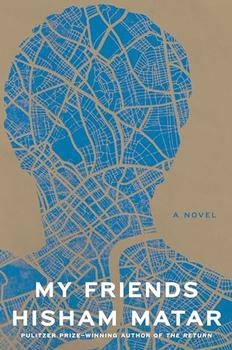Summary | Excerpt | Reading Guide | Reviews | Beyond the Book | Read-Alikes | Genres & Themes | Author Bio

This article relates to Anger Is a Gift
 Intersectionality is a term coined by Dr. Kimberlé Crenshaw almost three decades ago to explain how the oppression of African-American women was compounded by both race and gender. Essentially, she described the intersection of identities as affecting how much or how little power someone has within a society. It is a once-primarily academic and legal term that has become ubiquitous in the current zeitgeist of identity politics and racial justice. However, when talking about different kinds of representation encoded within novels, especially young adult novels, it is a really useful tool with which to interrogate what kinds of diversity we are seeing, and to determine if it is done in a way that engages with the real aspects of those identities, or if it is done in a way that is token for the sake of saying that there is a particular "type" of character present.
Intersectionality is a term coined by Dr. Kimberlé Crenshaw almost three decades ago to explain how the oppression of African-American women was compounded by both race and gender. Essentially, she described the intersection of identities as affecting how much or how little power someone has within a society. It is a once-primarily academic and legal term that has become ubiquitous in the current zeitgeist of identity politics and racial justice. However, when talking about different kinds of representation encoded within novels, especially young adult novels, it is a really useful tool with which to interrogate what kinds of diversity we are seeing, and to determine if it is done in a way that engages with the real aspects of those identities, or if it is done in a way that is token for the sake of saying that there is a particular "type" of character present.
Mark Oshiro's Anger is a Gift is a good example of intersectionally nuanced and diverse representation. Oshiro's characters are largely youth of color who are also diverse in gender, sexuality and ability. However, none of these hallmarks of diversity are written as the sole characterization of the characters; it is just a part of who they are. It helps to shape how they see the world and how they react, but they all have depth beyond that too. This is a really important thing because, in a time when diversity is becoming more and more of a buzzword, yet systemic biases against many different kinds of otherness are compounding and becoming more overt, Oshiro complicates how readers interact with and entertain the idea of identity. By presenting his readers with characters who embody multiple marginalizations but who are developed beyond those marginalizations, Oshiro pushes back against several things. First, that readers cannot understand or feel empathy for more complicated characters. Second, that the mass media market will not connect with characters that are "different" from the "mainstream" – this, for many years, has meant cis-white-male-heterosexual in terms of the US literary and media market. Third, he is presenting these characters as normal – people who usually are not seen in mainstream culture.
These things are important to society and to literature. A lot of critical work has been done on why children of marginalized backgrounds and othered identities need to see themselves in books that are published in the mainstream; because it lets them know that they are seen and recognized in the mainstream, that they are a part of the society that they live within. It is equally important for people who feel already represented and reflected in larger mediascapes to be acquainted with and connect to different kinds of life experiences and identities, so that they can be enriched by other lives and other perspectives. Then their view of the world widens. Social change becomes normalized and new ways of identifying people becomes accepted.
Intersectionality Diagram, courtesy of darrowmillerandfriends.com
Filed under Books and Authors
![]() This "beyond the book article" relates to Anger Is a Gift. It originally ran in July 2018 and has been updated for the
May 2019 paperback edition.
Go to magazine.
This "beyond the book article" relates to Anger Is a Gift. It originally ran in July 2018 and has been updated for the
May 2019 paperback edition.
Go to magazine.




A library is thought in cold storage
Click Here to find out who said this, as well as discovering other famous literary quotes!
Your guide toexceptional books
BookBrowse seeks out and recommends the best in contemporary fiction and nonfiction—books that not only engage and entertain but also deepen our understanding of ourselves and the world around us.